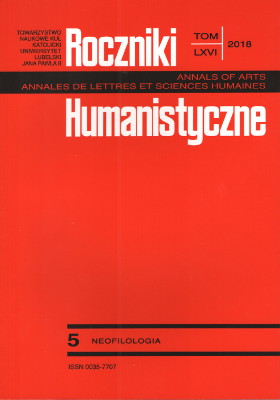Sobre la reescritura dramática en el Siglo de Oro: El caso de El bastardo de Castilla
On the Dramatic Rewriting in the Golden Age: The Case of El Bastardo de Castilla
Author(s): Rebeca Lázaro NisoSubject(s): Theatre, Dance, Performing Arts, Language and Literature Studies, Fine Arts / Performing Arts, Studies of Literature, Other Language Literature
Published by: Towarzystwo Naukowe KUL & Katolicki Uniwersytet Lubelski Jana Pawła II
Keywords: rewriting; El bastardo de Castilla; Cubillo de Aragón; El conde de Saldaña; Golden Age; theatre
Summary/Abstract: In the Golden Age the process of transmitting literature provides lots of examples of the use that writers made in subjects, motives or arguments as well as literal texts taken from other writers or their own work. This phenomenon of dramatic rewriting is exemplified in this paper through the concrete case of the grenadian playwriter Álvaro Cubillo de Aragón through two works that take as model two plays of Lope de Vega. One is, on the one hand, El bastardo de Castilla and El conde de Saldaña, and, on the other hand, Las mocedades de Bernardo del Carpio and El casamiento en la muerte, respectively. The analysis of its composition and its writing techniques are a clear example of Cubillo’s compositional habits.
Journal: Roczniki Humanistyczne
- Issue Year: 66/2018
- Issue No: 5
- Page Range: 59-73
- Page Count: 15
- Language: Spanish

